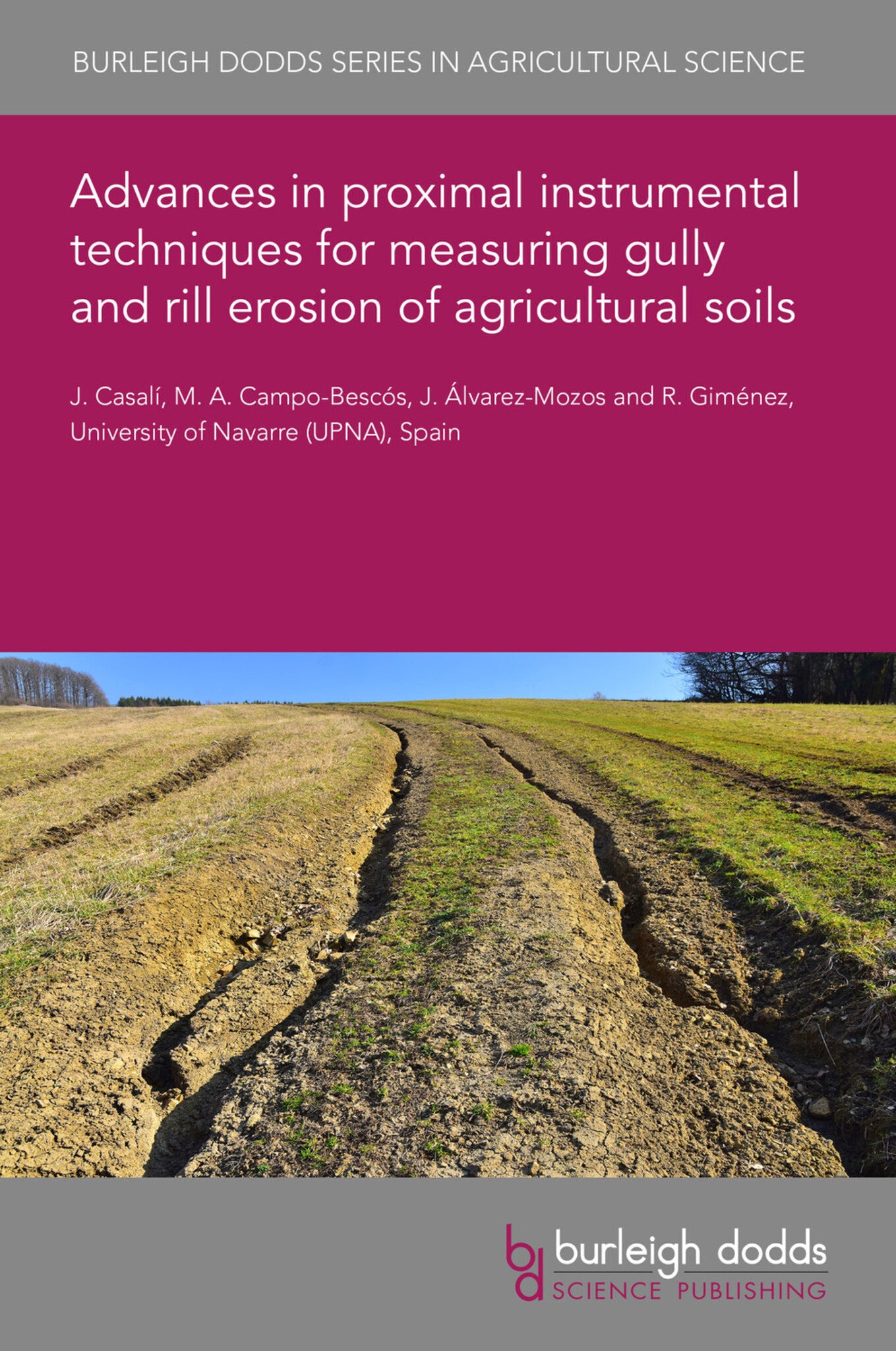We're sorry. An error has occurred
Please cancel or retry.
Advances in proximal instrumental techniques for measuring gully and rill erosion of agricultural soils

Some error occured while loading the Quick View. Please close the Quick View and try reloading the page.
Couldn't load pickup availability
- Format:
-
21 August 2024

Ephemeral gully and rill erosion have significant effects on agricultural land around the world. The characterization and quantification of these phenomena require us to determine their geometry and evolution, through either 3D or 2D approaches. 3D techniques are able to cover large areas at the expense of accuracy in their measurements, while 2D techniques are more accurate but can only be utilized on small areas at plot scale. This chapter highlights the current state of the art of ephemeral gully/rill measurement techniques based on the characterization of channel cross-sections. Gully/rill erosion is characterized and channel volume measuring techniques are described. Factors contributing to measurement error are explored, including (i) resolution of cross-section elevation profiles, (ii) channel size and shape, and (iii) number of cross-sections used per unit channel length. The case study indicates that the authors’ approach accurately determines the cross-section geometry of small erosion channels.

TECHNOLOGY & ENGINEERING / Agriculture / Agronomy / Soil Science, Soil science and management, SCIENCE / Global Warming & Climate Change, SCIENCE / Environmental Science, TECHNOLOGY & ENGINEERING / Environmental / General, TECHNOLOGY & ENGINEERING / Agriculture / Sustainable Agriculture, TECHNOLOGY & ENGINEERING / Agriculture / Agronomy / Crop Science, Climate change, Sustainable agriculture, Agronomy and crop production, Organic farming

- 1 Introduction
- 2 Ephemeral gully erosion
- 3 Rill erosion
- 4 Measurement of ephemeral gullies and rills
- 5 Methods for determining the shape and size of ephemeral gully and rill cross-sections
- 6 Issues in measuring shape and size
- 7 Case study: in situ characterization of small, eroded channels
- 8 Conclusion
- 9 Future trends in research
- 10 Where to look for further information
- 11 References



